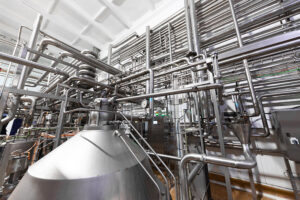When it comes to keeping your business running smoothly, the importance of a reliable and efficient water distribution system can’t be overstated. Whether you’re overseeing a large commercial facility, a new construction project, or simply upgrading outdated infrastructure, you need a plumbing partner who can handle it all—from planning and installation to upgrades and emergency repairs. At Schaible’s Mechanical, we specialize in comprehensive solutions for water distribution piping in Warren, NJ, and beyond, offering the experience and expertise your project demands.
Schaible's Mechanical Blog: Posts Tagged ‘water distribution piping’
One-Stop Shopping for Commercial Water Distribution
Monday, July 21st, 2025Common Issues with Distribution Piping and How to Address Them
Monday, September 2nd, 2024Steam systems are necessary for many types of business facilities, as are chilled and hot water distribution piping. When distribution piping systems encounter issues, they can disrupt operations, increase costs, and even pose safety hazards. In this post, we will explore some of the most common problems affecting distribution piping in commercial settings and what can be done to address them. Contact the team at Schaible’s Mechanical for distribution piping in Bridgewater Township, NJ.
What is Distribution Piping and How Does it Work?
Monday, May 13th, 2024Water distribution piping refers to the network of pipes and fittings used to transport water from its source, such as a treatment plant or well, to various points of use within a building, facility, or community. This system is crucial for delivering potable water for drinking, cooking, bathing, and other purposes, as well as for industrial processes, heating, and cooling.
Water distribution piping systems typically consist of pipes made from materials like copper, PVC (polyvinyl chloride), PEX (cross-linked polyethylene), or steel, along with various fittings, valves, and connectors. These pipes are laid out in a network of interconnected lines, often buried underground or concealed within walls, floors, or ceilings.



